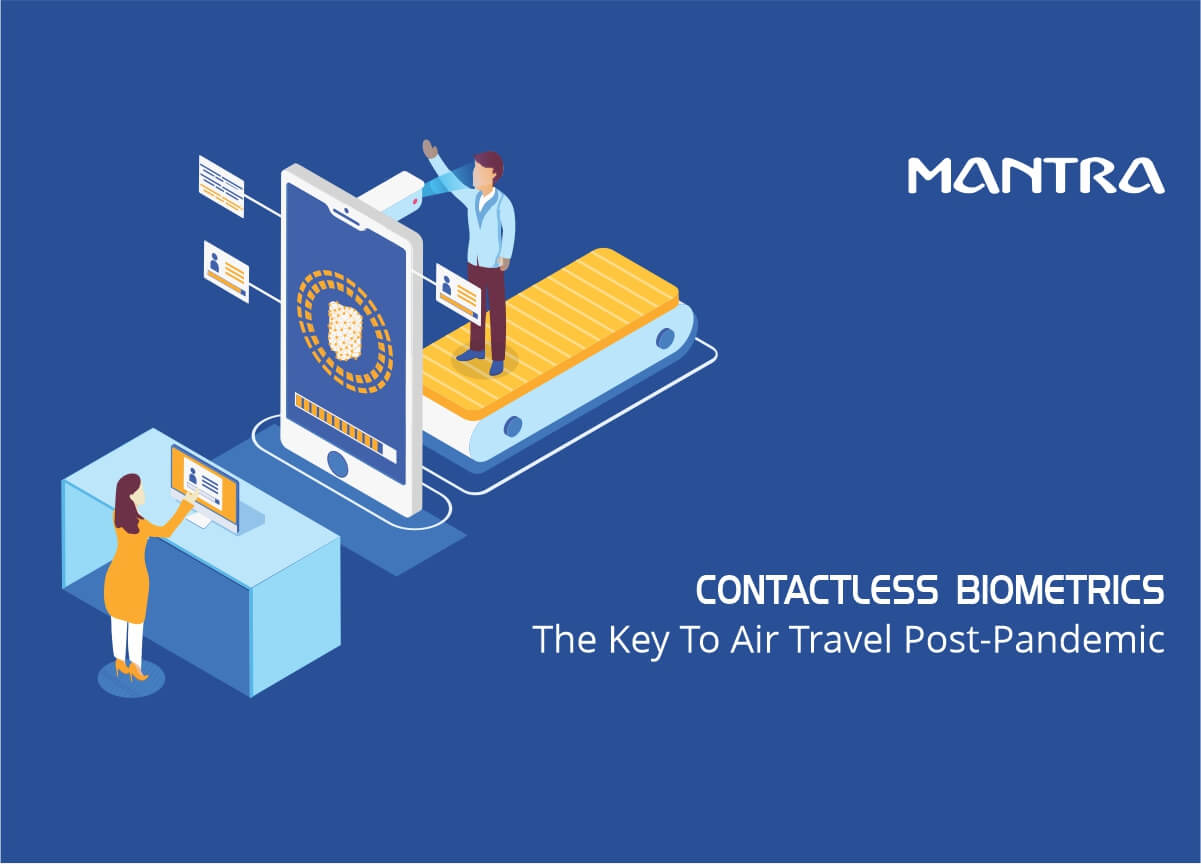Covid 19 has hit every sector, bringing many businesses to a halt. Airlines is one of the industries that continue to suffer as a result of travel restrictions and bans. The airline industry is adopting new technologies to support governments in the fight against Covid spread and bring back the halted sector to normal. Three factors are now driving the aviation industry:
Reduce the queues at the airport.
Go contactless
Improve security.
Airline companies are considering biometric technology as the solution to compete with these problems. In this blog, we will discuss how biometrics is transforming air transport.
How can biometrics aid in post-pandemic air travel?
Facial recognition

Facial recognition is the contactless biometric authentication modality used in airports. According to the International Civil Aviation Organization (ICAO) standards, facial recognition is the primary authentication biometric used in biometric passports or E-passports. Face biometrics in E-passports was designed for border security, but airport authorities may now use them for check-in, boarding, and access to restricted areas. Also, facial recognition is a contactless procedure, which is compatible with pandemic situations.
Biometric self-service kiosk for check-in
Self-service Kiosks are implemented at the gateways to achieve the prime motive that is to reduce queues. Check-in and baggage clearance processes hold people at the airport for a long time. Kiosk devices with facial recognition can streamline the check-in process by reducing steps in the authentication. Face recognition will be the link between the passenger and their baggage. In this system, the airport authority can reduce baggage check-in and check-out time.
The Kiosk system with face recognition assists in check-in for already registered users, and travellers may also use the Kiosk self-service machine to register for travel at the airport.
Biometric/E-passport for immigration security clearance

Many countries are now in the process of bringing in an E-passport for every citizen. The E-passport could bring about a change in immigration by removing bottlenecks at border crossings. Officials at immigration will scan the E-passport while also scanning the face of the passport holder. The system will cross-check the passenger's face with the photo saved on the E-passport and in the system directory. The system will also confirm other details in the passport are correct. All of these steps may be performed in a matter of seconds, allowing security agents to concentrate on high-risk passengers.
Biometric boarding gates

Boarding passes will soon be history; the passenger's face will serve as the new boarding pass. Smart gates installed at the boarding will authenticate a person who is supposed to use the gateway. The procedure consists of two steps: first, determining whether or not the person is eligible to use the gateway. Second, verify the face of the passenger using an E-passport.
Vaccine passport
Faking vaccine certificates and test results is a significant issue with which the airline industry is currently dealing. Anybody with basic photo-editing knowledge can edit the test results. Combining biometrics with vaccine certificates can protect the privacy of the vaccine passport holder's data and eliminate the possibility of sharing credentials. The same biometric system used in airports can be employed to cross-check vaccination passports.
Closing Statement
After 9/11, the airline industry started adapting to new technology to maximize security. Biometric technology was first deployed in airports to improve security. It has now become a saviour amid pandemics, reducing crowds at airports, verifying passports of vaccinated individuals, ease up airport operations and so on.

Comments